Purpose of Drawing:
The purposes of drawing (Draw Frame) are to improve the uniformity of the slivers and to straighten the fibres in the slivers. The improvement in uniformity is due to the doubling and drafting of eight to ten slivers can into one. The straightening of the fibres is accomplished by drawing fibres by each other. The straightening is important because it arranges the fibres more parallel to each other and to the direction of the fibre strand. When the fibres are well straightened, the arrangement helps in producing uniform, strong and smooth yarn.
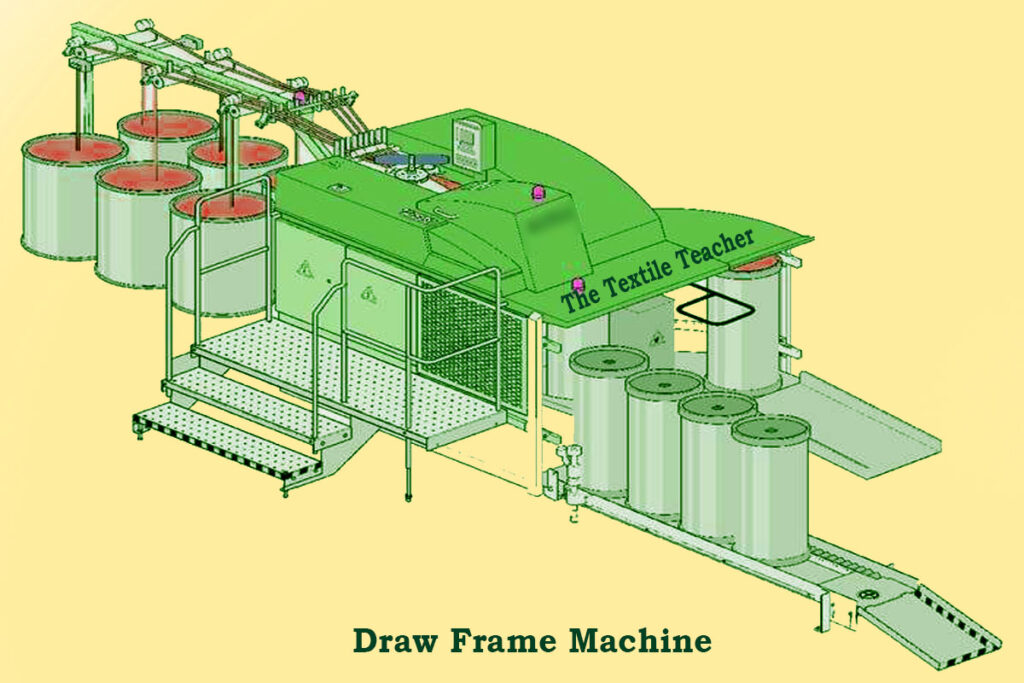
Objectives of Draw Frame Machine:
- To straighten the curled and hooked fibres.
- To make the fibres parallel to their neighboring fibres.
- To improve uniformity of fibres by drafting and doubling.
- To reduce mass per unit length of sliver.
- To remove micro dust from slivers by air suction pipe.
- To blend raw material perfectly.
TYPE OF DRAW FRAME:
- Breaker Draw frame: Feed material is carded sliver. During this process 8-10 carded slivers are fed to this machine to produce more parallelized breaker sliver.
- Finisher Draw frame: Feed material is breaker draw frame drawn sliver. During this process 8-10 breaker slivers are fed to this machine to produce more parallelized & uniformed finisher sliver.
Operating Principle
The passage of material of Draw Frame machine is Eight to ten card or draw frame slivers (see Fig. Passage of Material Draw Frame Machine) are fed to the drafting zone (3). A feed roller pair (2) is located above each can (1) to enable the feeding step to be performed in a controlled manner without false drafts. The feed roller pairs are mounted in a creel zone and each is positively driven. The slivers running into the drafting zone leave it, after a draft of 8 to 10, as a web lacking significant cohesion. In order to avoid disintegration of the web, which would otherwise be unavoidable at the high operating speeds currently in use, it is condensed into a sliver immediately after the drafting arrangement. This sliver is then (for example in some makes) guided through a tube (4) via a passage (6) of the sliver tube into a can (7), in which it must be laid in clean coils with optimal utilization of the space in the can. To enable the can to take up as much material as possible, the sliver is compressed by passing it through calendaring rollers (5).
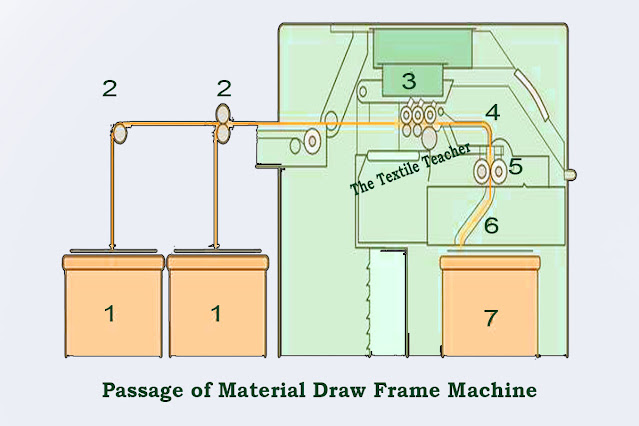
DIFFERENT ZONES OF DRAW FRAME MACHINE
CREEL ZONE:
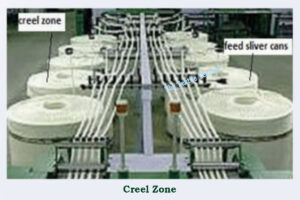
GUIDE ROLLER:
AUTO LEVELER:
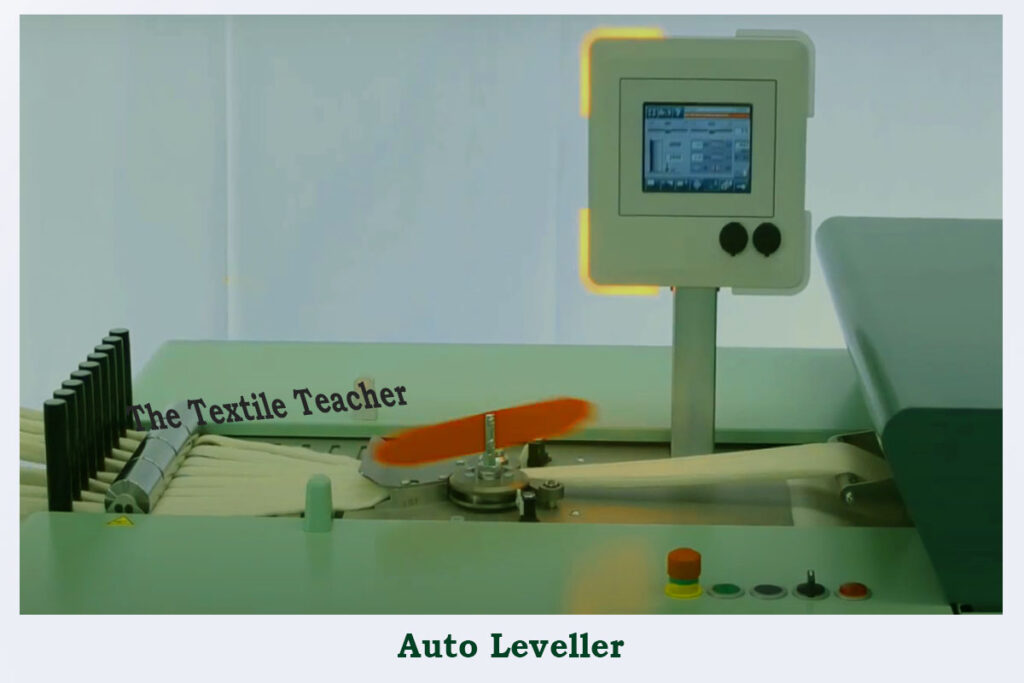
DRAFTING ZONE
SLIVER COILING:
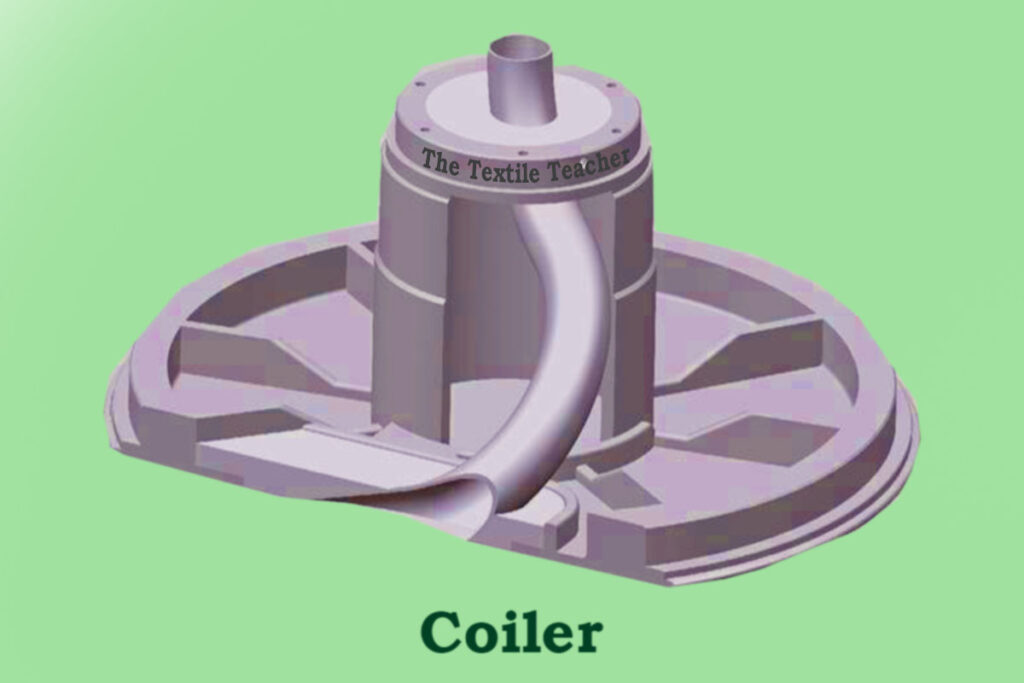
DOFFING OF CANS:
THE TASK OF THE DRAW FRAME
EQUALIZING
One of the main tasks of the draw frame is improving evenness over the short, medium and long term. Card slivers fed to the draw frame have a degree of unevenness that cannot be tolerated in practice, and slivers from the comber contain the infamous piecing’s; these must be obscured. It should be noted, however, that short-wave sliver evenness is not as sometimes assumed the sole criterion for evaluating the performance of the draw frame. Equalizing is always and in any case performed by doubling, and can optionally also be performed by additional auto leveling.
PARALLELIZING
To obtain an optimal value for strength in the yarn characteristics, the fibres must be arranged parallel in the fibre strand. It is mainly the draw frames task to create this parallel arrangement. It fulfills this task by means of the draft, since every drafting step leads to straightening of the fibres. The value of the draft must be adapted to the material, i.e. to several fibre parameters, mainly:
- The staple length;
- The mass of the fibres;
- The volume of the strand;
- The degree of order (parallel disposition).
BLENDING
In the spinning process every doubling produces simultaneous blending especially the 8-10 doublings on the draw frame. The doubling also provides a degree of compensation of raw material variations by blending, which occurs simultaneously. This result is exploited in particular in the production of blended yarns comprising cotton/synthetic or synthetic/synthetic blends. At the draw frame, metering of the individual components can be carried out very simply by selection of the number of slivers entering the machine. Eg.- 70:30 blend (P:C).
DUST REMOVAL
To remove dust to the greatest practical extent at every possible point within the overall process. Unfortunately, dust removal can only be carried out to a significant degree. Since a large proportion of these very small particles (dust) adhere relatively strongly to the fibres. The draw frame is therefore a good dust-removing machine. On high-performance draw frames equipped with appropriate suction systems.
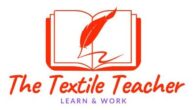
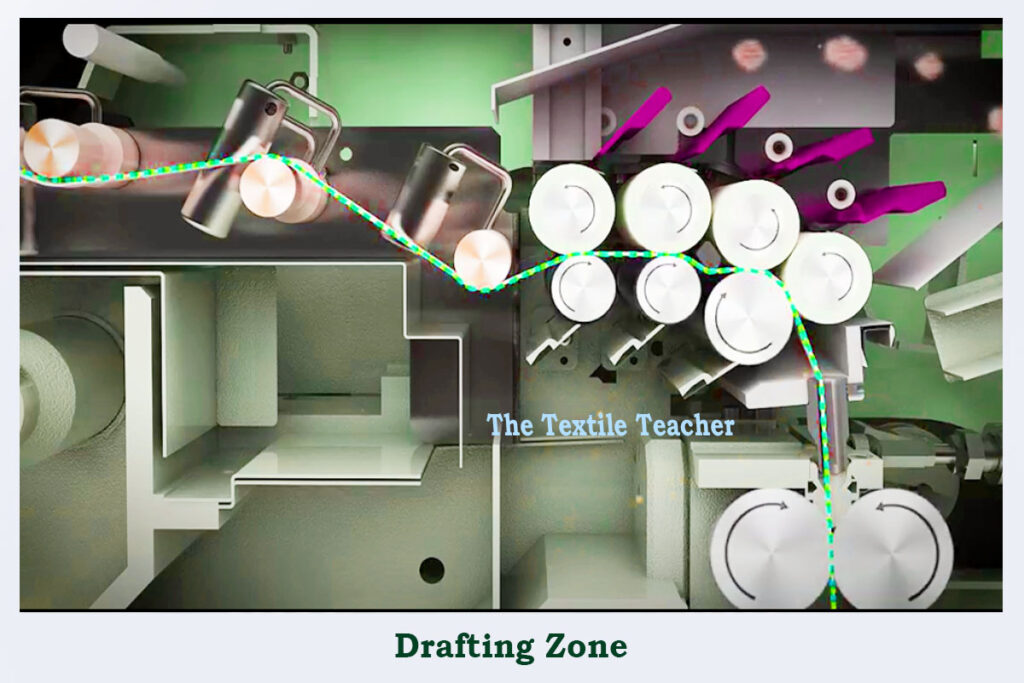
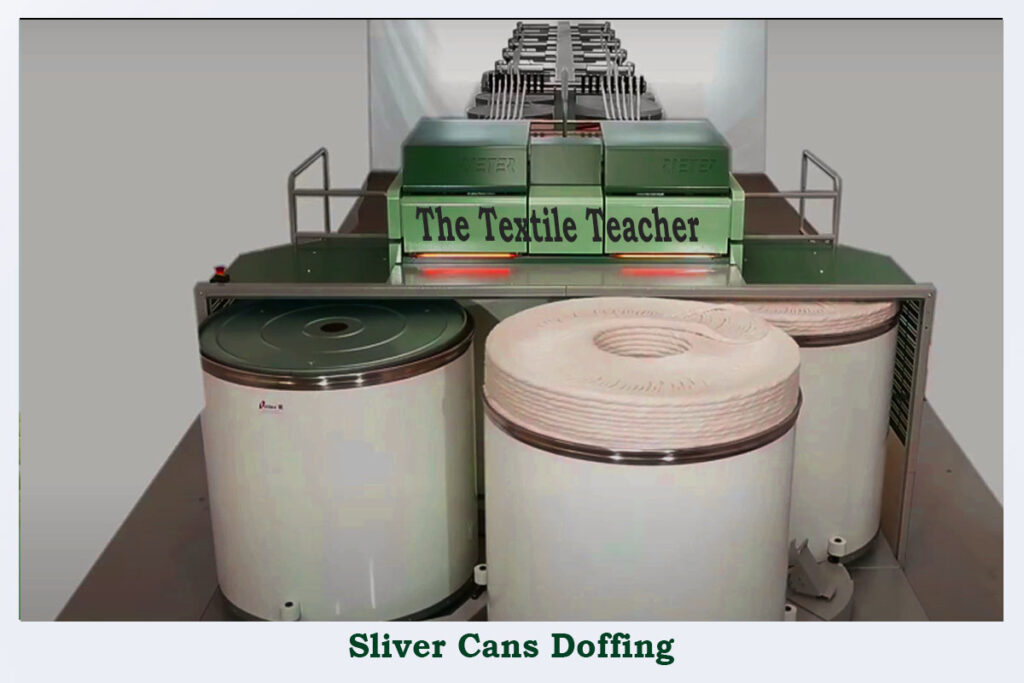
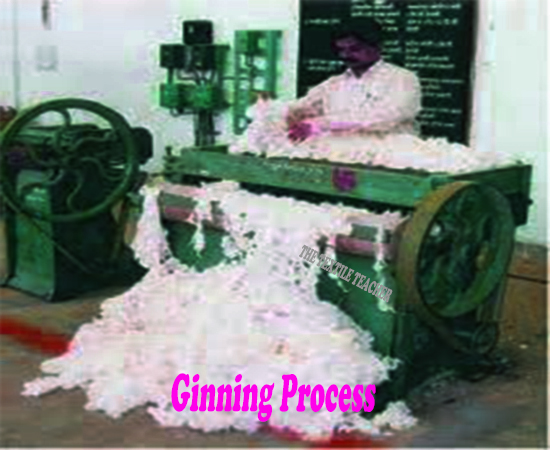
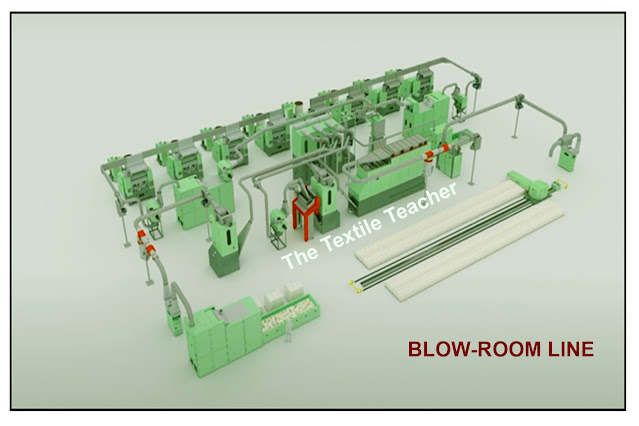
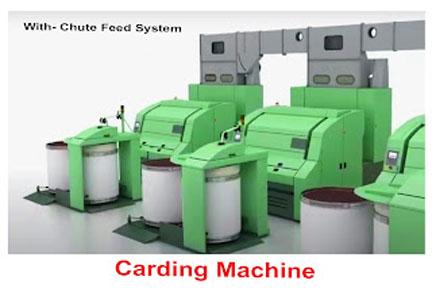
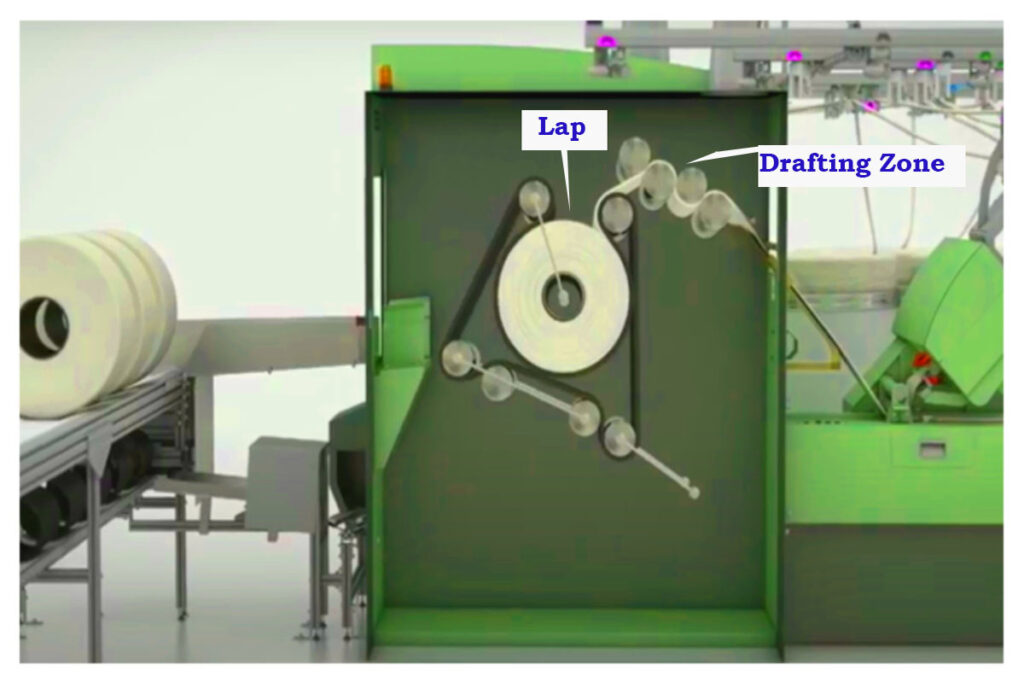
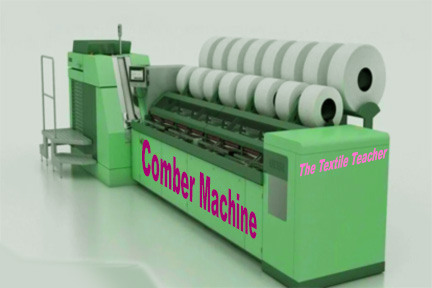

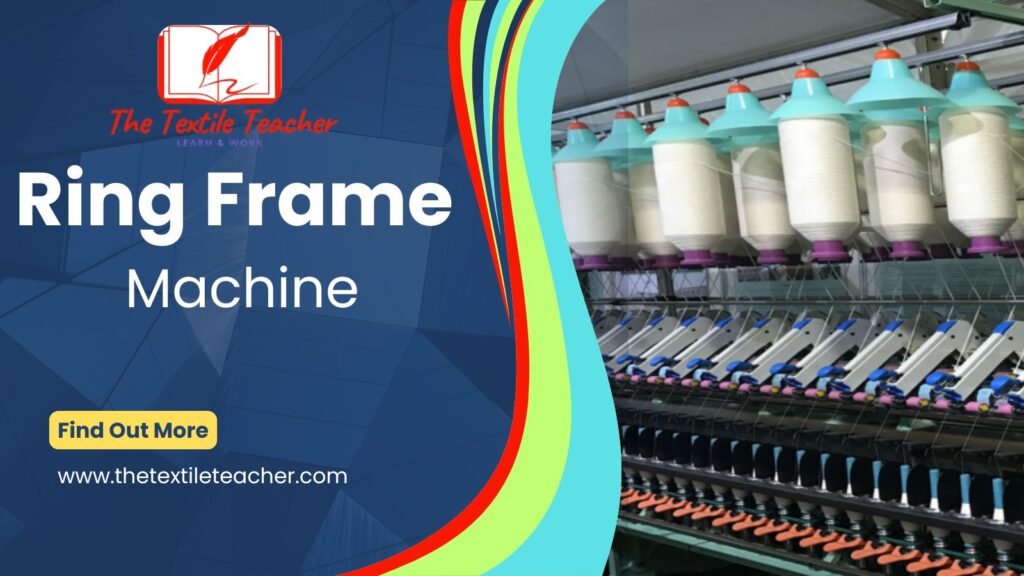
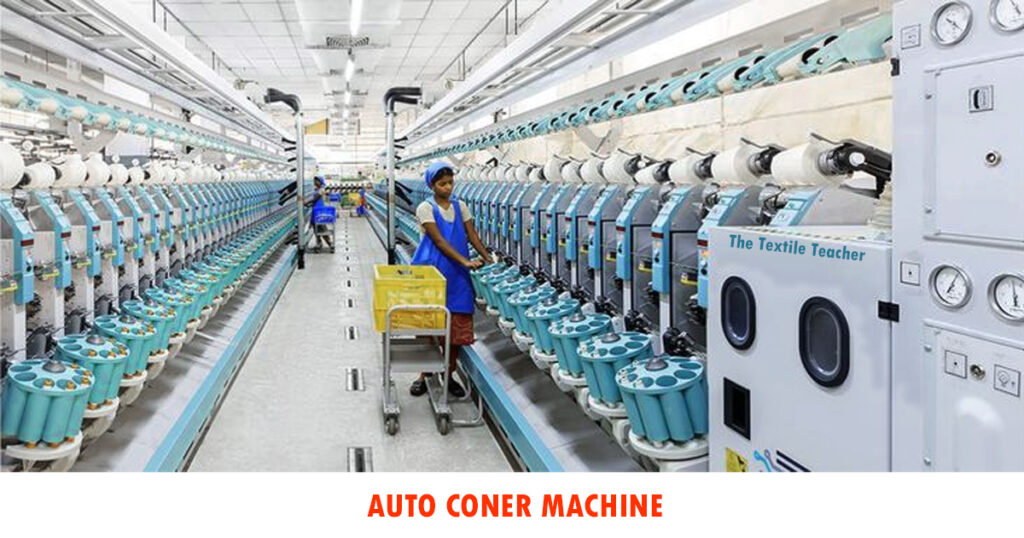
Pingback: #What is Speed Frame Machine? Objectives of Speed Frame Machine Parts or Zones of Roving Frame Machine -